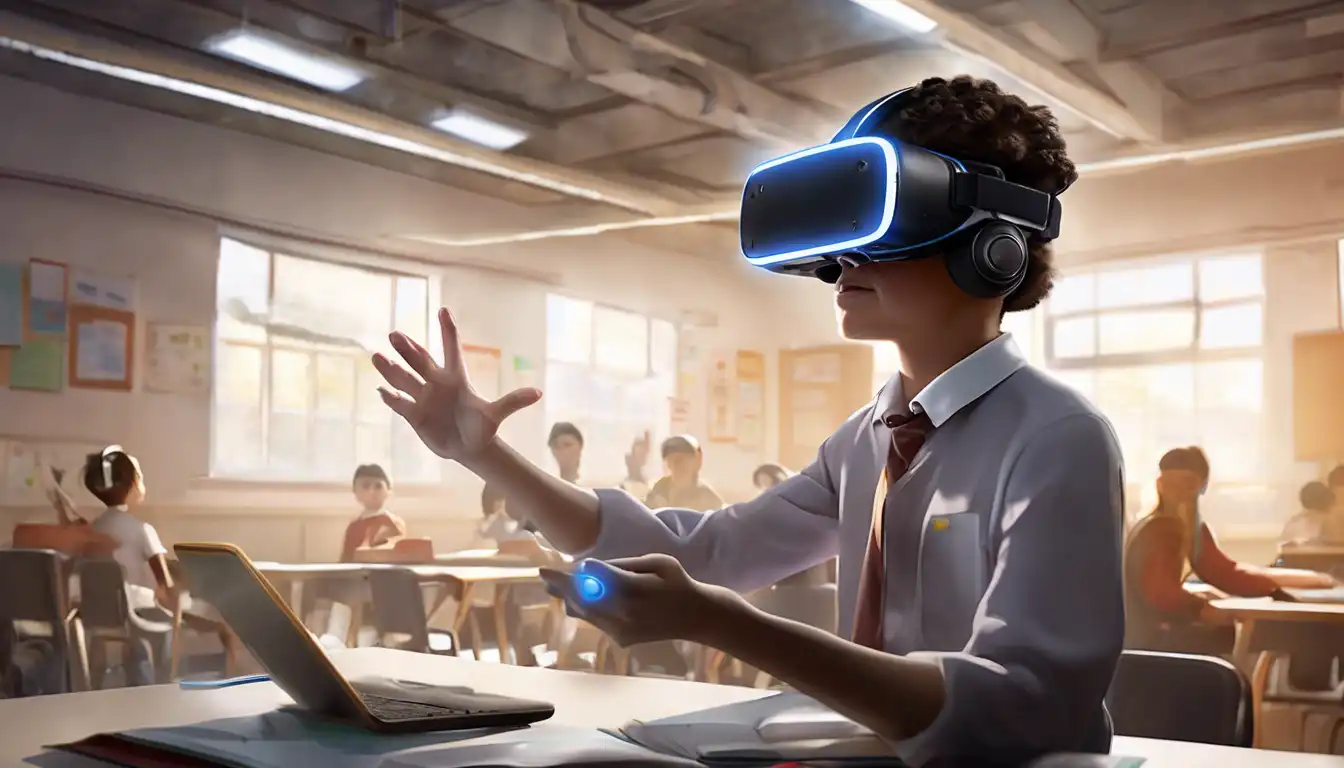The Transformative Impact of Virtual Reality on Learning and Skill Development
Virtual Reality (VR) technology has rapidly evolved from a futuristic concept into a practical tool in various sectors, notably in education and training. Its immersive nature offers unparalleled opportunities for engaging learners, enhancing understanding, and improving retention rates. This article delves into the potential of VR in revolutionizing educational methodologies and professional training programs.
Why VR in Education?
VR provides a simulated environment that can mimic real-world scenarios or create entirely new worlds for learners to explore. This capability makes it an excellent tool for subjects that are difficult to teach through traditional methods. For instance, medical students can perform virtual surgeries, and history students can witness historical events unfold around them. The immersive experience fosters a deeper understanding and retention of complex subjects.
Enhancing Professional Training with VR
Beyond the classroom, VR is making waves in professional training across industries. From aviation to construction, VR simulations allow trainees to practice skills in a risk-free environment. This not only improves safety but also reduces the costs associated with traditional training methods. For example, pilots can experience various flight conditions without leaving the ground, and engineers can interact with 3D models of machinery before handling the actual equipment.
The Benefits of VR in Learning
- Engagement: VR's interactive nature keeps learners engaged, making education more enjoyable and effective.
- Accessibility: With VR, geographical and physical limitations are eliminated, allowing learners from anywhere to access high-quality education and training.
- Customization: VR programs can be tailored to meet individual learning styles and paces, offering a personalized learning experience.
- Cost-Effectiveness: Over time, VR can reduce the need for physical materials and travel, making education and training more affordable.
Challenges and Considerations
Despite its potential, the integration of VR into education and training is not without challenges. The cost of VR equipment and the need for technical support can be prohibitive for some institutions. Additionally, there is a learning curve associated with using VR technology, which may deter some educators and trainers. However, as technology advances and becomes more accessible, these barriers are expected to diminish.
The Future of VR in Education and Training
The future of VR in education and training looks promising. With advancements in technology, VR experiences are becoming more realistic and interactive. This progress, coupled with decreasing costs, suggests that VR will become a staple in educational institutions and training programs worldwide. As we continue to explore the capabilities of VR, its potential to transform learning and skill development is limitless.
For more insights into innovative educational technologies, check out our article on The Role of AI in Personalized Learning.
